Text
[draft] Living Zero-Waste

Am I the only one who gets that pang of guilt when I forget to bring my reusable cup to the coffee shop? Believe me, I’ll honestly do anything for a cup of coffee, but the moment I think of The Great Pacific Garbage Patch (here’s a cheesy video to make you feel some things) I start to question if it’s really worth it.
art credit: Nina Cosford
0 notes
Text
A Southern Naturalist’s Guide to Weeds

When you start gardening for the first time, it can be pretty darn overwhelming. You have clandestine dreams of heirloom tomatoes reaching toward the sky, only the best muscadine vines pouring over your white picket fence. What really happens? A bunch of dead, brown leaves on plants that were supposed to provide you with extra homegrown, veggie goodness. And you begin to tell people: “I just don’t have a green thumb.”
Believe it or not, the green thumb is a bit of a myth. The key phrase here is “a bit.” Why? Because I do truly believe that plants have an ethereal ability to know if the people who care for them are actually doing so diligently. Also, because I know for a fact that there is an actual method - a science, or rather, a variety of sciences such as chemistry, biology, botany - behind gardening.
When I gardened for the first time, I was thrown straight into the fire. I worked on an organic farm my first year of college and had to learn how to garden on a semi-large scale. I learned about raised beds, tilling, weeding and watering. As much as I struggled with the physically demanding job as a snot-nosed freshman in college (from the New York City metro area, no less, in the middle-of-nowhere Georgia), I did learn some valuable lessons during my time at the farm.
Although there are a lot of recommendations I can give you (like researching what to plant during each season), I wanted to start out with one major recommendation that, if not used, can really throw off a natural green thumb. This is to learn how to weed.
Okay, yes, weeding isn’t the sexiest thing. Especially if you’re a lover of all green things like me, it can seem backwards at first to start tearing plants out the ground. But if you want your garden to work, believe me - you gotta get out those weeds.
First, I’m going to be straightforward with you all. What some gardeners call “weeds” aren’t always weeds. In my mind, a weed is not just something that is ugly/something you don’t want in your garden, a weed is any plant that threatens the growth and survival of the plants you do want in your garden. Often, many gardeners just take out what looks ugly and can even leave behind more nefarious plants because they are aesthetically pleasing (daffodils, dandelions, honey-suckles, English ivy are some examples). For me, weeds are synonymous with invasive species, which I will explain in detail in a moment. Furthermore, I would like to note early on that some of the weeds I list are in fact woody, meaning they are plants that produce wood as structural tissue. This is distinct from herbaceous (non-woody) plants, which are the opposite and are often what we think of when we think of weeds in our garden. However, woody weeds can often be found in backyards, front yards, forested areas, even in parking lots and they should also be treated as plants we simply don’t want around.
Now that I’ve laid that groundwork for you, I’m going to also note that this weeding guide is going to cater toward my Southeastern friends, so apologies for my bias. However, I will still implore you to read on because knowing common weeds and how to remove them not only helps you and your garden, but is also essential for the health of forests. As I alluded to earlier, many weeds are actually things called non-native invasive species, or NNIS for short. There are actually some non-native species that are not invasive, meaning that they do not cause tremendous ecological problems when introduced to a new environment, but most do. Think about it. If you were plopped in an entirely different ecosystem with no natural competitor or predator, wouldn’t you thrive?
That’s why these NNIS are so darn tricky and given the recent MULTI-million dollar lawsuit won by a school groundkeeper who used Round-up, I think it’s going to become more and more useful to be able to properly ID and manually remove weeds.

English ivy is everywhere. I mean it. Landscapers use it for ground cover (good to combat soil erosion; bad for trees) and colleges drape it alongside their art history buildings. Yes, it may be pretty, but you know that its unadulterated growth means something sinister. English ivy is very easy to identify - on trees, on the ground and even creeping into your garden. Look for the green leaf that looks like a stereotypical ivy leaf and go ahead and take it out. What’s great about English ivy (never thought I’d say that...) is that once you start pulling on it, pretty much all of it can be pulled out. You just need to engage that upper body strength and keep pulling like a game of tug-of-war. You’ll likely end up covered in dirt, but isn’t that why you wanted to garden anyway?

Cherry Laurel. I kind of love this one to be honest with you. I know, I know it’s bad, but what’s cool about cherry laurel is you can use it to impress people by grabbing one of its glossy leafs, crumpling it up and shoving it in that person’s nose. Ask: “Smell cherries?” If you ID’d it right, they will definitely smell that fruity fragrance emanating from the crushed up leaf. Cherry laurel is less likely to be found in small gardens, but you’re very likely to see it in your backyard, local park or while walking along a forest trail. Look for super glossy green leaves.

If you don’t see this one in your garden or backyard, I’d be surprised. This is the dreaded monkey grass, or liriope (a funny word to hear in some southern accents). Monkey grass will dominate your garden, backyard or local woods. Look for the purple small flowers and, if you don’t have time to dig into the soil and pull out the whole root system (which is insane and you will most definitely need a soil knife for), at least cut those flowers before they seed. Then come back for the rest.

Speaking of grasses you will never seem to be able to get rid of: crab grass! If you don’t find crab grass sprouting up in your garden, I will literally give you $20. I’m not joking, this stuff is everywhere. It’s incredibly difficult to pull, unfortunately, and you can pull what you can, but you may have to chemically treat these ones. If you want to avoid that, I would recommend digging a deep circle around the grass and pulling out as much of a roots as you can. You can identify crabgrass by looking for blades of grass that look about as big as your fingers (they are sometimes called finger-grasses, I believe). Look for thin “stems” at the bottom and wide blades.
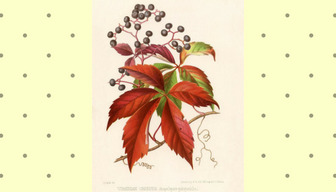
Virginia creeper. And yes, it is actually creepy, because this weed is in fact poisonous. Parthenocissus quinquefolia (say that five times fast) is in the grape family and actually has oxalate crystals in its vines that cause a rash. I would recommend pulling this out with long sleeves and long pants, as well as gardening gloves. Its leaves are easy enough to identify, with distinct five-leaflets.
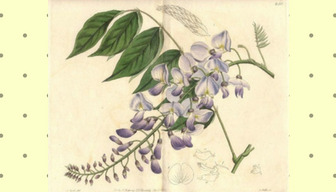
I see this one on the highway. I’m not even joking. Japanese and Chinese wisteria (Wisteria floribunda and sinensis, respectively) is easily identifiable once it flowers, because of how purple its flowers are. Look for a cascading effect of flowers, with the flowers getting smaller as the plant bends downward. This one is difficult to pull if it gets out of hand. You can try to kill it with 20% vinegar or good ole’ hand pulling.
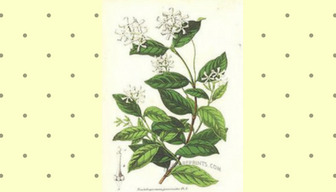
What would be this list without privet? What’s tricky about privet is that it’s actually a group of shrubs which are diverse in their morphology. It is sometimes identifiable by distinct blue-black berries and/or small white flowers. Chinese privet is the most common because it can really grow anywhere, in sun, shade, wet soil, dry soil, etc. Pull it out by the roots whenever and wherever you can.
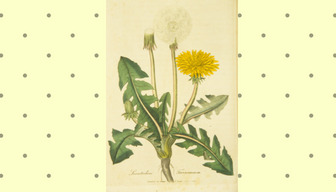
Dandelions! You are so, so, so likely to find this sprouting up in your garden and guess what? Unlike so many of the other weeds I’ve discussed so far, dandelions actually do not hail from Asia, but from Europe. Also, some good news for you, hand-pulling isn’t really the move with these guys. I suggest mowing these or picking them (pull out roots if possible) for your dinner table’s vase. Basically, destroying developing flowers before they are able to mature into seed distributors prevents the opportunity for new germination, thus reducing the amount of dandelions you see next year.
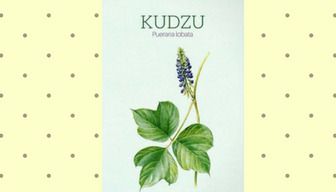
Although I could go on for ages, I wanted to go ahead and wrap up with this one. Kudzu is similar to English ivy in that it is incredibly prolific and grows quite quickly. Kudzu is also more likely to be found near woody areas and possibly along the sides of residential structures. The idea with kudzu is to cut it to the ground first, so it has no chance to keep growing upward. After that, continuous mowing and clipping and even hand-pulling at the root will reduce the amount of kudzu you see each year. Look for vines with broad leaves and possibly small purple flowers. Find it, kill it.
Best wishes on your fight against the invasive weeds! Remember, my inbox is open for any comments/concerns/questions or corrections you’d like to make to this post. As always, thank you for joining me on this journey to living a more sustainable and eco-friendly life. May your green thumb become greener!
art credit: Grace Easton of Gracedraws
#gardening#garden#weeds#invasives#south#southern#southerngarden#englishivy#kudzu#privet#farming#farm
0 notes
Text
Let’s Chat: Slow vs. Fast Fashion

On July 31st, Arden Rose, YouTube-veteran, quirky Zooey Deschannel look-a-like and Almost Adulting author, posted a video entitled: “how to NOT destroy the planet while shopping.” Such a confrontational and eco-conscious title from a relatively mainstream Youtube “influencer” (a term that seemed to be forced upon “content creators” in a creepy, new-age way) is all-too-often a rarity, which is what immediately drew me to the video. There should be no misunderstanding here, however; I have long admired and adored the off-kilter and endearing ramblings of Arden and have especially savored her taste for all things unique: her collaboration with Mejuri alone speaks volumes of her appreciation for individuality and one-of-kind pieces. I even discovered my new favorite arts-and-crafts magazine, Frankie Mag, through my following of Arden. But as Arden acknowledges herself in the video, YouTubers often promote the proliferation of fast-fashion by updating their viewers on the newest trends or engaging in sponsorships that offer limited-time discount codes to fans, as well as showcase their own capitalist splurges through “haul” videos, “What I got for [insert generic holiday here]” videos. Part of what makes YouTube work as a place for creatives to support themselves (albeit, barely and only if they are 1. able to captivate a large enough audience and 2. produce content that is wholly non-offensive) are the brand deals, the promotions, and the “plugs.” However, in her video, Arden acknowledges her past hauls of fast-fashion tyrants such as H&M and Forever 21 and notes her disgust for ever having taken part in promoting those brands. Arden identifies the 2015 documentary The True Cost to be her personal turning point - like Earthlings does for newfound vegans, The True Cost caused an awakening in her because of how the film illuminates the unethical and anti-humanitarian externalities of fast-fashion. I took a gander at the film and whole-heartedly agreed. From both the film, Arden’s video and my on-going following of Dearly Bethany, I have acquired a central message: “Buying clothing should be a series of investments, aimed at longevity and quality.” This is something that has been lost in both the fashion industry and on social media platforms. As a whole, we have become obsessed with having the next best thing. This pressure sits disproportionately on the shoulders of women, who are aggressively marketed to on a variety of platforms. Even I have noticed the sly ads (damn algorithms) on Instagram and Facebook that pry at my insecurities (hormonal acne, hydrogen peroxide damaged hair, a distinct lack of tasteful jewelry).
Overall, a seismic shift has occurred in my brain. I am taking on the old-school mindset that clothing should not last just a season, but should last years. The only items of clothing I’ve ever owned that have lived up to the tune of this song have been my Doc Martens. Inherited from my mother, these Docs have lasted over 25 years. And so, I want to learn how to make my entire closet shift toward this tenant of sustainability. This means no more therapeutic fast-fashion purchases. Even Arden states in her video that this may be a difficult change for women (or men) who see shopping as a kind of therapy. I know I sure do. Even though I have decreased my susceptibility to impulse purchases as I have gotten older (I am obsessed with my credit score, kids), I know that when I was young that shopping at department stores was a way for my mother and I to bond in profound ways. She is a very fashionable woman and fortunately, or unfortunately, I have followed in her footsteps. We were able, even if only for a moment, to escape our day-to-day lives and look through a window of affluence and frivolous spending. If this sounds familiar to you, let it be known that you are not judged at all. However, if you are also like me and feel the need to do what is best for the planet and for people, you might want to tag along on my journey to a sustainable closet. I’ve even made it easy for you and I by doing some research on some great “investment brands” that value sustainability. Obviously there are many brands that are environmentally conscious, ethical and sustainable, but there is also a lot of hogwash out there because these labels have become boxes that brands check to cater to niche markets. I want to work through the smoke-and-mirrors of these labels and give you all some recommendations of companies that I hope walk the walk.
Your Guide to Sustainable Clothing Brands:

Everlane’s motto is “Radical Transparency,” which is exactly what they bring to the table when it comes to the fast vs. slow fashion discussion. This company focuses on making their factories a great place to work, with frequent compliance audits at each factory to evaluate significant factors such as fair wages, reasonable hours and environmental considerations. You can learn more about Everlane’s factories here.
Everlane gets to our core message by stating out the gate: “At Everlane, we’re not big on trends. We want you to wear our pieces for years, even decades, to come. That’s why we source the finest materials and factories for our timeless products— like our Grade-A cashmere sweaters, Italian shoes, and Peruvian Pima tees.”

Photo: Everlane
Most importantly Everlane is incredibly transparent about what seems to matter to consumers the most - pricing. Everlane believes that consumers have the right to know how much their clothing costs to make and often reveals the true costs behind all of their products - from materials to labor to transportation - and then sell them without the traditional retail markup. You can look at the cost breakdown for items such as modern loafers, cashmere crews, totes, denim and jackets here.
They even have a super cool feature called “Choose What You Pay” which is like a traditional sale except you choose how much you pay for individual items. Most importantly, their clothing is beautiful and Instagram knows I’ve been doing this research because I get their targeted ads pretty much every time I log into the app. I’ll take it - it’s flattering.


Next up, Sisterhood. I’ll let them speak first. They write on their vibe page: “We are proud to love Mother Earth. This means that we do our absolute best day to day to reduce our impact on the environment. Against throw away fashion, we aim to create individual pieces that will never go out of style and will stand the test of time.”
Sisterhood’s paper to packaging is all made from 100% recycled material and can be recycled once again when finished with.The company works with a small factory to produce their designs and works to operate with zero waste and no chemicals during the production process. They claim fair wages for all workers and regular inspections of factories. You can “join the Sisterhood” for some pretty reasonable prices.
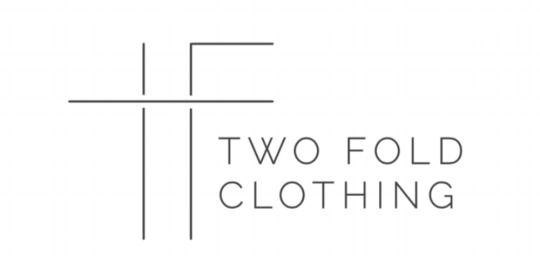

I recently discovered this awesome brand. According to the company, “Two Fold stands for two things: environmental and social consciousness.” They are a small batch clothing label made in Charlotte, North Carolina focused on creating made-to-order and capsule collections twice a year rather than a continual release cycle. The rationale behind this is simple: quality over quantity.
On the environmental front, Two Fold uses organic and sustainable fabrics with fibers such as organic cotton, tencel and raw silk noil which are all biodegradable and have renewable origins. Their packaging is all 100% recyclable as well.
On the social consciousness front, Two Fold works with a company called 410 Bridge, that goes into communities in the developing world, assesses their needs, and implements programs to bring them into economic stability.
Two Fold’s goal is to uplift women through these two core values.

Photo: Two Fold Clothing, Spring - Summer 2018 Collection
These are just three brands out of many that value sustainability. However, there are so many more that do not and primarily focus on profit maximization. Even more so, there are so many brands out there like Urban Outfitters and American Apparel (RIP, basically) that have dark pasts and negative core values. Even the brand “& Other Stores,” which I considered highlighting for this post, is owned by H&M Group, which as you know, is an H&M-run consortium of brands. And H&M is pretty much the definition of fast or “throw-away” fashion.
At the end of the day, how we treat the planet and our fellow humans is up to us. Clothing is one of the many parts of our daily lives (unless it’s not for you, which is cool too) that has significant implications for the two realms (two folds, if you will) of environmentalism and social consciousness. If you want to start to move toward these values, these three brands are great places to start. Furthermore, if you have clothing that you want to get rid of, don’t just let it end up in a landfill. There are lots of great companies and organizations such as Goodwill, Salvation Army and the online thrift store, ThredUp, which are all about recycling, reselling and/or donation of clothing.
Remember, moving toward a sustainable life is a process and it’s not going to happen overnight. Be gentle to the planet, to people and most importantly, yourself! Look out for the next blog post for more recommendations and to continue on this journey to a zero-waste, environmentally conscious and ethical life with me.
art credit: Grace Easton of Gracedraws
0 notes